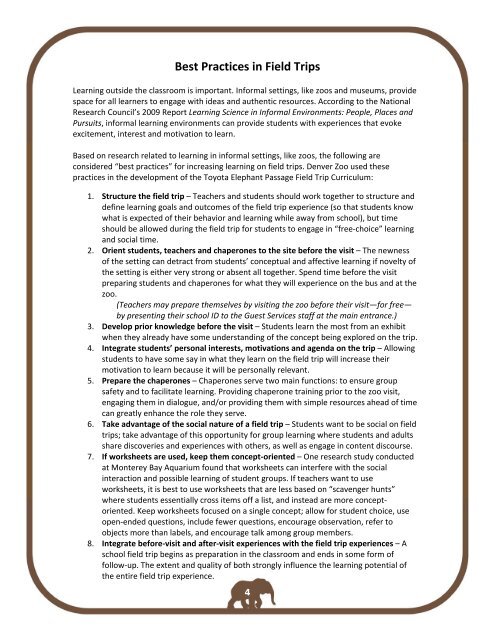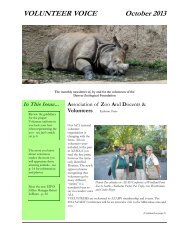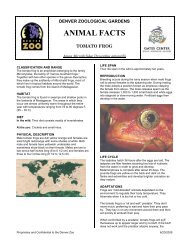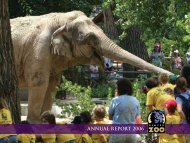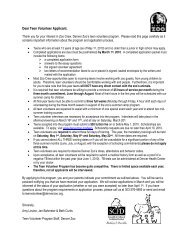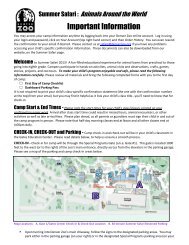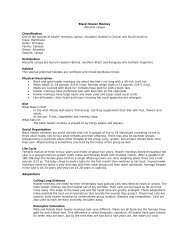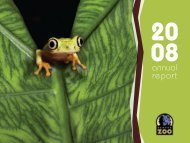Download Printer Friendly PDF - Denver Zoo
Download Printer Friendly PDF - Denver Zoo
Download Printer Friendly PDF - Denver Zoo
You also want an ePaper? Increase the reach of your titles
YUMPU automatically turns print PDFs into web optimized ePapers that Google loves.
Best Practices in Field TripsLearning outside the classroom is important. Informal settings, like zoos and museums, providespace for all learners to engage with ideas and authentic resources. According to the NationalResearch Council’s 2009 Report Learning Science in Informal Environments: People, Places andPursuits, informal learning environments can provide students with experiences that evokeexcitement, interest and motivation to learn.Based on research related to learning in informal settings, like zoos, the following areconsidered “best practices” for increasing learning on field trips. <strong>Denver</strong> <strong>Zoo</strong> used thesepractices in the development of the Toyota Elephant Passage Field Trip Curriculum:1. Structure the field trip – Teachers and students should work together to structure anddefine learning goals and outcomes of the field trip experience (so that students knowwhat is expected of their behavior and learning while away from school), but timeshould be allowed during the field trip for students to engage in “free‐choice” learningand social time.2. Orient students, teachers and chaperones to the site before the visit – The newnessof the setting can detract from students’ conceptual and affective learning if novelty ofthe setting is either very strong or absent all together. Spend time before the visitpreparing students and chaperones for what they will experience on the bus and at thezoo.(Teachers may prepare themselves by visiting the zoo before their visit—for free—by presenting their school ID to the Guest Services staff at the main entrance.)3. Develop prior knowledge before the visit – Students learn the most from an exhibitwhen they already have some understanding of the concept being explored on the trip.4. Integrate students’ personal interests, motivations and agenda on the trip – Allowingstudents to have some say in what they learn on the field trip will increase theirmotivation to learn because it will be personally relevant.5. Prepare the chaperones – Chaperones serve two main functions: to ensure groupsafety and to facilitate learning. Providing chaperone training prior to the zoo visit,engaging them in dialogue, and/or providing them with simple resources ahead of timecan greatly enhance the role they serve.6. Take advantage of the social nature of a field trip – Students want to be social on fieldtrips; take advantage of this opportunity for group learning where students and adultsshare discoveries and experiences with others, as well as engage in content discourse.7. If worksheets are used, keep them concept‐oriented – One research study conductedat Monterey Bay Aquarium found that worksheets can interfere with the socialinteraction and possible learning of student groups. If teachers want to useworksheets, it is best to use worksheets that are less based on “scavenger hunts”where students essentially cross items off a list, and instead are more conceptoriented.Keep worksheets focused on a single concept; allow for student choice, useopen‐ended questions, include fewer questions, encourage observation, refer toobjects more than labels, and encourage talk among group members.8. Integrate before‐visit and after‐visit experiences with the field trip experiences – Aschool field trip begins as preparation in the classroom and ends in some form offollow‐up. The extent and quality of both strongly influence the learning potential ofthe entire field trip experience.4


